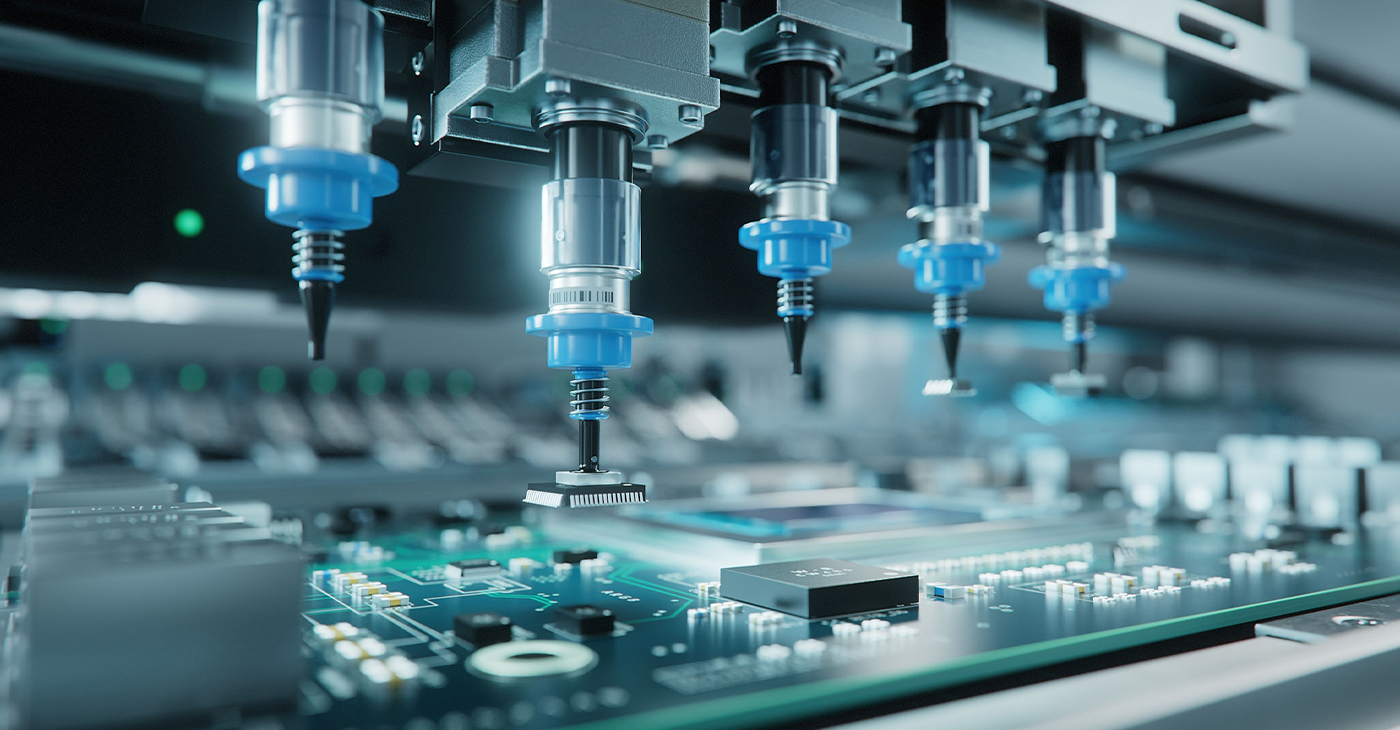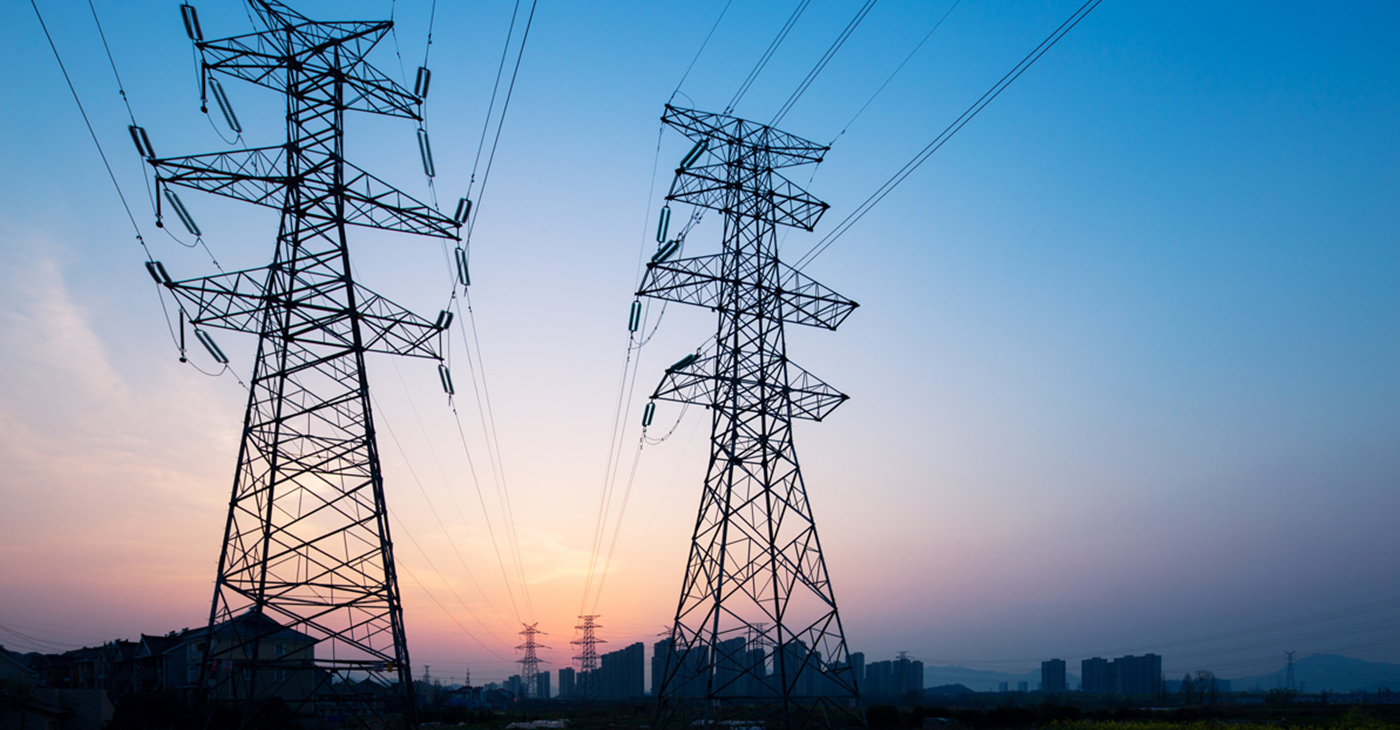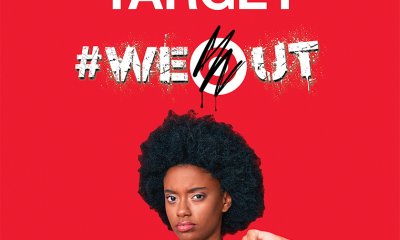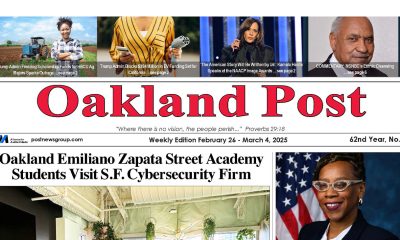Technology
Coming to a Car Near You: Auto Technology at CES

The OpenAir I1.3 infotainment system is on display in a car at the Visteon booth Thursday, Jan. 8, 2015, at the International CES in Las Vegas. The technology allows you to to access your smart phone and its apps from the touch screen in your car. (AP Photo/John Locher)
KIMBERLY PIERCEALL, Associated Press
LAS VEGAS (AP) — Self-driving cars garner much of the attention, but in reality, we’re years away from tooling around in something like Knight Rider’s KITT. Coming sooner to a car near you: smartphone apps on dash displays, cruise control that adapts to cars around it, remote engine starting and more.
At International CES in Las Vegas this week, 10 automakers and numerous suppliers unveiled technological features that will find their way into cars in the distant and not-so-distant future. Here’s a look at some of their wares.
Your car will think. It will react. It will learn.
“This car will take responsibility,” said Dieter Zetsche, leader of Mercedes-Benz, as he introduced the company’s luxury self-driving concept car of the future.
If that sounds a bit scary, like the prologue to a film in which machines overtake mankind, companies supplying the brains and eyes for these robocars say it’s for our own good. Cars already do some of these things, really. Anti-lock brake systems, cruise control and parallel parking assistance are steps toward taking our hands completely off the wheel.
There are 1.2 million traffic-related deaths globally each year, according to the World Health Organization; 32,719 of them were in the U.S. in 2013. As automakers point out, your self-driving car won’t get drunk, tired or distracted. And they could return something many other gadgets have taken away: time.
First, “the car has to become self-aware. It has to be able to see and understand what’s happening around it,” said Jen-Hsun Huang, co-founder and CEO of Nvidia, which introduced a super-fast processor at the show and has been working with Audi to develop piloted systems and in-car digital displays.
Audi touted a road trip that its A7 piloted prototype — piloted because there still needs to be a driver behind the wheel to assure nothing goes awry — took from Silicon Valley to Las Vegas for the show, without incident, “driven” by chosen journalists sitting behind the wheel.
“We are ready for piloted driving on public streets,” said Ulrich Hackenberg from Audi’s board of management.
But laws that would allow such autonomy aren’t quite ready; neither are answers to questions such as: Can someone sue a driverless car if it’s in a crash? If it can’t avoid a crash, how will it decide what or whom to crash into? Can a car be hacked and if so, how can it be protected?
Carmakers and suppliers admit there’s still quite a bit they and their cars are learning. Mercedes-Benz says their ultimate vision of the future — a sleek carriage that will ferry us to our destinations — exists beyond 2030, at least.
For now, though, your car might be able to know:
—Where you’re shopping
Ask Chevrolet’s OnStar system for directions to the nearest Dunkin Donuts, and you might receive a coupon. The carmaker has partnered with the doughnut chain, Priceline.com and the Speedway brand of gas stations for opt-in promotions.
The service can mine data in the car to offer advice on systems that might be close to failing, like a near-dead battery or a fuel system malfunction. Pass along your real-time driving habits to your insurer, and you might earn rewards for good driving.
—What’s on your smartphone:
Being able to plug one’s smartphone into a dash display seems obvious with so many plug-and-play options elsewhere, but it hasn’t been easy in cars until now. Apple’s Car Play and eventually Android’s version will let a driver can plug in their devices and view their songs, apps and maps on the in-car display.
That’s a huge improvement, said Ron Montoya of car research site Edmunds.com.
“People are responding to texts on their own inside the car. They’re playing their music, they’re playing their Pandora,” he said. Now, rather than fumble with a device, often taking their eyes off the road, the information they’re looking for will be within their line of sight on the dash display. Carmakers from Hyundai (Apple Car Play will be available in 2015 models of the Sonata and more widely available in 2016) to Audi (it’ll be available in the Q7) all talked about phone integration.
—How to talk to your smartphone, or smartwatch:
Hyundai’s Blue Link system now includes a smartphone app that lets car owners start the car remotely, lock or unlock it, find their car within a mile using GPS tracking (such as in a big parking lot), send a destination to the car’s navigation system and send alerts. Have a teenage driver in the house who’s borrowing the car? Your car, via your phone, will tell you if the car was started after curfew or if it was traveling above a certain speed limit.
—What’s happening around it:
That red light? That slow car up ahead? Adaptive cruise control available in cars soon will be so advanced that the machines will sense when a car ahead is slowing down and safely change lanes to zoom around (on the driver’s signal.) If a car up ahead stops or there’s a red light, the car will come to a halt. Inside a Volkswagen Golf being tested by Valeo and IAV, who are developing automated software and hardware for cars, self-driving mode brought the car slowly to a stop behind a school bus on a Las Vegas street, the driver’s hands off the wheel and feet off the pedals.
“I’m not worried,” said driver Lars Eggenstein of IAV.
Copyright 2015 The Associated Press. All rights reserved. This material may not be published, broadcast, rewritten or redistributed.
Activism
Self-eSTEM Empowers BIPOC Women, Girls in Science, Math
In January 2025, Self-eSTEM will launch digital and generative AI programming, which provides digital literacy and AI literacy training through an entrepreneurial project-based activity. This programming will be a hybrid (i.e. in-person and online). Additionally, thanks to a grant from Comcast, in spring 2025, the organization will have a co-ed series for middle and high school students.

By Y’Anad Burrell
Special to The Post
In a world where technology plays an increasingly central role in all aspects of life, the importance of Science, Technology, Engineering, and Math (STEM) education cannot be overstated. Recognizing the significance of STEM for the future, focusing on young women and girls is a critical step in achieving gender equality and empowering the next generation.
Self-eSTEM, an Oakland-based non-profit organization, was founded by Adamaka Ajaelo, an Oakland native who had a successful corporate career with several Bay Area technology and non-tech companies. Ajaelo boldly decided to step away from these companies to give 100% of her time and talent to the non-profit organization she started in 2014 in the belief that she can change the game in innovation and future STEM leaders.
Over the course of a decade, Ajaelo has provided futurist tech programming to more than 2,000 BIPOC women and girls. The organization has an Early STEM Immersion Program for ages 7-17, Emerging Leaders Workshops for ages 18-25 and volunteer network opportunities for ages 25 and up.
In January 2025, Self-eSTEM will launch digital and generative AI programming, which provides digital literacy and AI literacy training through an entrepreneurial project-based activity. This programming will be a hybrid (i.e. in-person and online). Additionally, thanks to a grant from Comcast, in spring 2025, the organization will have a co-ed series for middle and high school students.
While the organization’s programs center on innovation and technology, participants also gain other valuable skills critical for self-development as they prepare for a workforce future. “Self-eSTEM encourages young women to expand on teamwork, communication, creativity, and problem-solving skills. The organization allows young women to enter STEM careers and pathways,” said Trinity Taylor, a seventh-year innovator.
“Our journey over the last decade is a testament to the power of community and opportunity, and I couldn’t be more excited for what the future holds as we continue to break barriers and spark dreams,” said Ajaelo.
“By encouraging girls to explore STEM fields from a young age, we foster their intellectual growth and equip them with the tools needed to thrive in a competitive global economy,” Ajaelo says.
Empowering young girls through STEM education is also a key driver of innovation and progress. When young women and girls are encouraged to pursue careers in STEM, they bring unique perspectives and problem-solving approaches to the table, leading to more diverse and inclusive solutions. This diversity is crucial for driving creativity and pushing boundaries in scientific and technological advancements.
Self-eSTEM has fundraising opportunities year-round, but year-end giving is one of the most critical times to support the program. Visit www.selfestem.org to donate to the organization, as your generosity and support will propel programming support for today’s innovators.
You will also find more details about Self-eSTEM’s programs on their website and social channels @selfestemorg
Antonio Ray Harvey
Feds: California Will Be Home to New National Semiconductor Technology Center
California was chosen by the U.S. Department of Commerce (Commerce) and Natcast, the operator of the National Semiconductor Technology Center (NSTC) to be home to the headquarters for the National Semiconductor Technology Center – as part of the Biden-Harris Admin’s CHIPS and Science Act. The CHIPS for America Design and Collaboration Facility (DCF) will be one of three CHIPS for America research and design (R&D) facilities and will also operate as the headquarters for the NTSC and Natcast.

By Antonio Ray Harvey
California was chosen by the U.S. Department of Commerce (Commerce) and Natcast, the operator of the National Semiconductor Technology Center (NSTC) to be home to the headquarters for the National Semiconductor Technology Center – as part of the Biden-Harris Admin’s CHIPS and Science Act.
The CHIPS for America Design and Collaboration Facility (DCF) will be one of three CHIPS for America research and design (R&D) facilities and will also operate as the headquarters for the NTSC and Natcast.
“We are thrilled that the Department of Commerce and Natcast chose to locate this critically important facility in Sunnyvale, the heart of the Silicon Valley, alongside the world’s largest concentration of semiconductor businesses, talent, intellectual property, and investment activity,” said Dee Dee Myers, Senior Economic Advisor to Gov. Gavin Newsom and Director of the Governor’s Office of Business and Economic Development (GO-Biz). “The Newsom Administration and our partners across the industry know how important it is to shorten the timeframe from R&D to commercialization.”
According to GO-Biz, the DCF is expected to direct over $1 billion in research funding and create more than 200 employees in the next decade. The facility will serve as the center for advanced semiconductor research in chip design, electronic design automation, chip and system architecture, and hardware security. The CHF will be essential to the country’s semiconductor workforce development efforts.
As detailed in the released NSTC Strategic Plan, the DCF will suppress the obstacles to “semiconductor prototyping, experimentation,” and other R&D activities that will enhance the country’s global power and leadership in design, materials, and process innovation while enabling a vigorous domestic industr“Establishing the NSTC headquarters and design hub in California will capitalize on our state’s unparalleled assets to grow a highly skilled workforce and develop next-generation advancements,” stated U.S. Sen. Alex Padilla (D-Calif.). “This CHIPS Act funding will propel emerging technologies and protect America’s global semiconductor leadership, all while bringing good-paying jobs to our state.”
Community
Advanced Conductors Provide Path for Grid Expansion
Utility companies in the United States could double electric transmission capacity by 2035 by replacing existing transmission lines with those made from advanced materials, according to a new study published Monday in the Proceedings of the National Academy of Sciences.

By Matthew Burciaga
UC Berkeley News
Utility companies in the United States could double electric transmission capacity by 2035 by replacing existing transmission lines with those made from advanced materials, according to a new study published Monday in the Proceedings of the National Academy of Sciences.
Led by Duncan Callaway, professor and chair of the Energy and Resources Group (ERG), and Amol Phadke, an affiliate and senior scientist at the Goldman School of Public Policy, the first-of-its-kind study details a faster and more cost-effective way to expand the grid and connect the more than 1,200 gigawatts of renewable energy projects awaiting approval. The analysis was first published last December as a working paper by the Energy Institute at Haas and has been covered by the New York Times, the Washington Post, Heatmap News, and other news outlets.
“Expanding transmission capacity is critical to decarbonization, and we sought to study ways to build it faster and cheaper,” said Callaway.
It currently takes 10 to 15 years to build a new power line and the U.S. is building transmission lines at a lower rate than it was in the past decade. Without sufficient capacity, renewable energy projects often sit in limbo for years as transmission operators study what upgrades—if any—are needed to accommodate the increased loads.
The authors modeled various scenarios to determine if replacing existing transmission conductors with those made with advanced composite-core materials—a process known as reconductoring—could provide a pathway to faster grid expansion.
Several reconductoring projects have been initiated in Belgium and the Netherlands, and utility companies in the U.S. have used the material to string transmission lines across wide spans like river crossings. That technology, however, has not made its way to the majority of overhead power lines that feed residential and commercial customers.
“As we learned more about the technology, we realized that no one had done the detailed modeling needed to understand the technology’s potential for large-scale transmission capacity increases,” said Phadke.
Based on the authors’ projections, it is cheaper—and quicker—for utility companies to replace the 53,000 existing transmission lines with advanced composite-core materials than it is to build entirely new transmission lines.
They assert that doing so would reduce wholesale electricity costs by 3% to 4% on average—translating to $85 billion in system cost savings by 2035 and $180 billion by 2050.
“The level of interest we’ve received from federal and state agencies, transmission companies and utilities is extremely encouraging, and since our initial report, the Department of Energy has committed hundreds of millions of dollars to reconductoring projects,” said co-author Emilia Chojkiewicz, a PhD student in ERG and an affiliate of the Goldman School of Public Policy. “We are looking forward to learning about these projects as they unfold.”
Additional co-authors include Nikit Abhyankar and Umed Paliwal, affiliates at the Goldman School of Public Policy; and Casey Baker and Ric O’Connell of GridLab, a nonprofit that provides comprehensive technical grid expertise to policy makers and advocates.
-

 #NNPA BlackPress4 weeks ago
#NNPA BlackPress4 weeks agoTarget Takes a Hit: $12.4 Billion Wiped Out as Boycotts Grow
-

 Activism3 weeks ago
Activism3 weeks agoUndocumented Workers Are Struggling to Feed Themselves. Slashed Budgets and New Immigration Policies Bring Fresh Challenges
-

 #NNPA BlackPress4 weeks ago
#NNPA BlackPress4 weeks agoBREAKING Groundbreaking Singer Angie Stone Dies in Car Accident at 63
-

 Activism4 weeks ago
Activism4 weeks agoOakland Post: Week of February 26 – March 4, 2025
-

 Arts and Culture4 weeks ago
Arts and Culture4 weeks agoBeverly Lorraine Greene: A Pioneering Architect and Symbol of Possibility and Progress
-

 #NNPA BlackPress4 weeks ago
#NNPA BlackPress4 weeks agoNAACP Legend and Freedom Fighter Hazel Dukes Passes
-

 #NNPA BlackPress4 weeks ago
#NNPA BlackPress4 weeks agoTrump Kicks the Ukrainian President Out of the White House
-

 #NNPA BlackPress4 weeks ago
#NNPA BlackPress4 weeks agoApple Shareholders Reject Effort to Dismantle DEI Initiatives, Approve $500 Billion U.S. Investment Plan














































